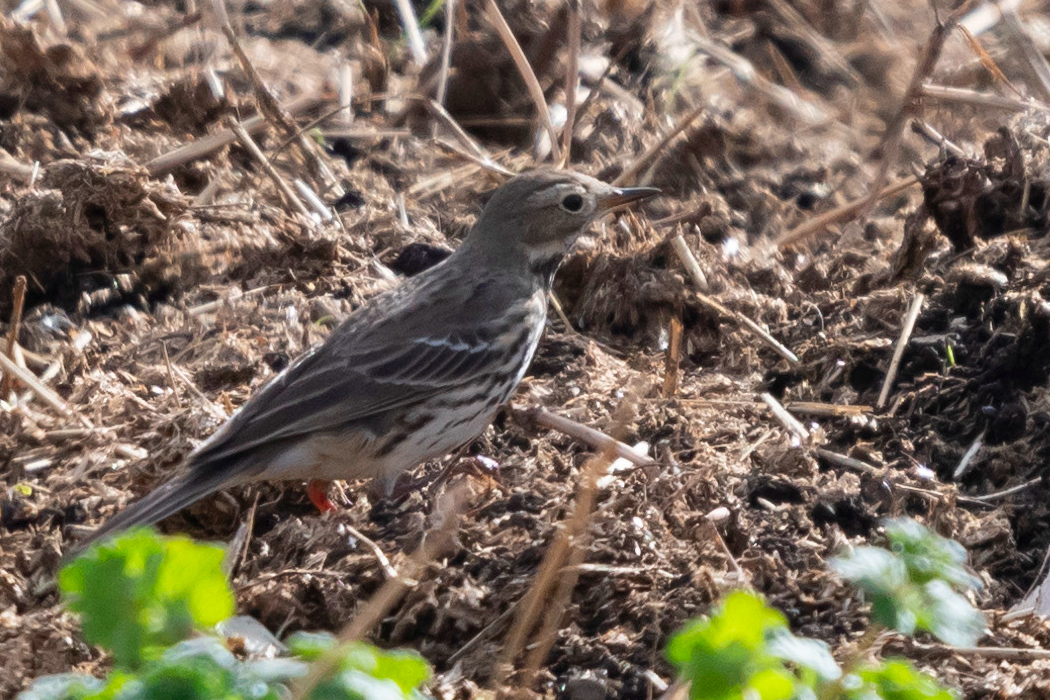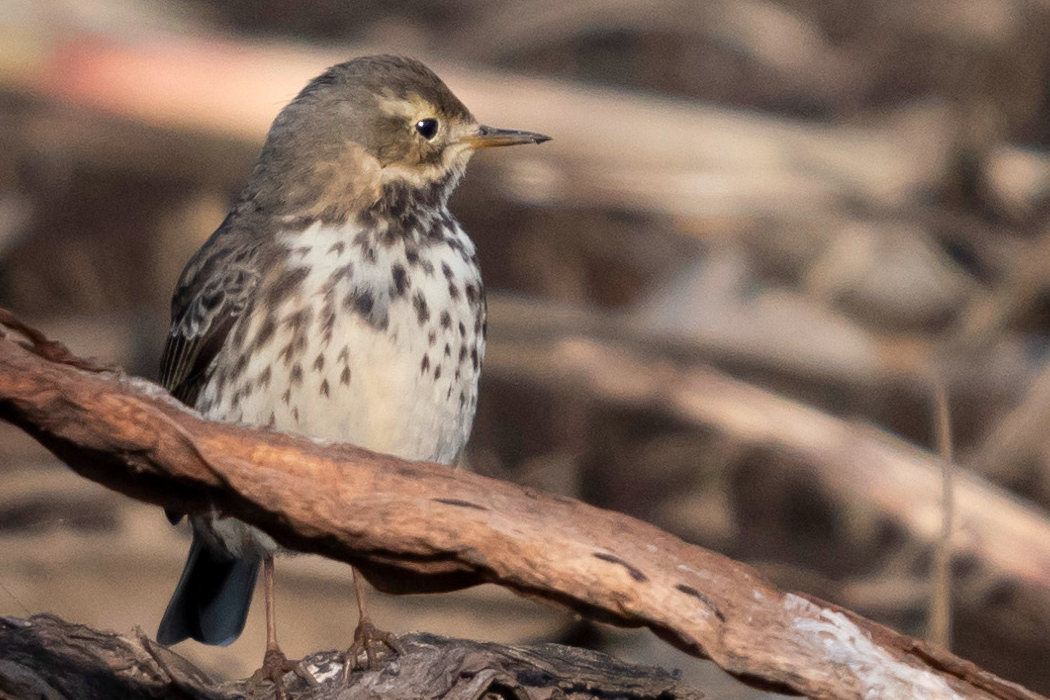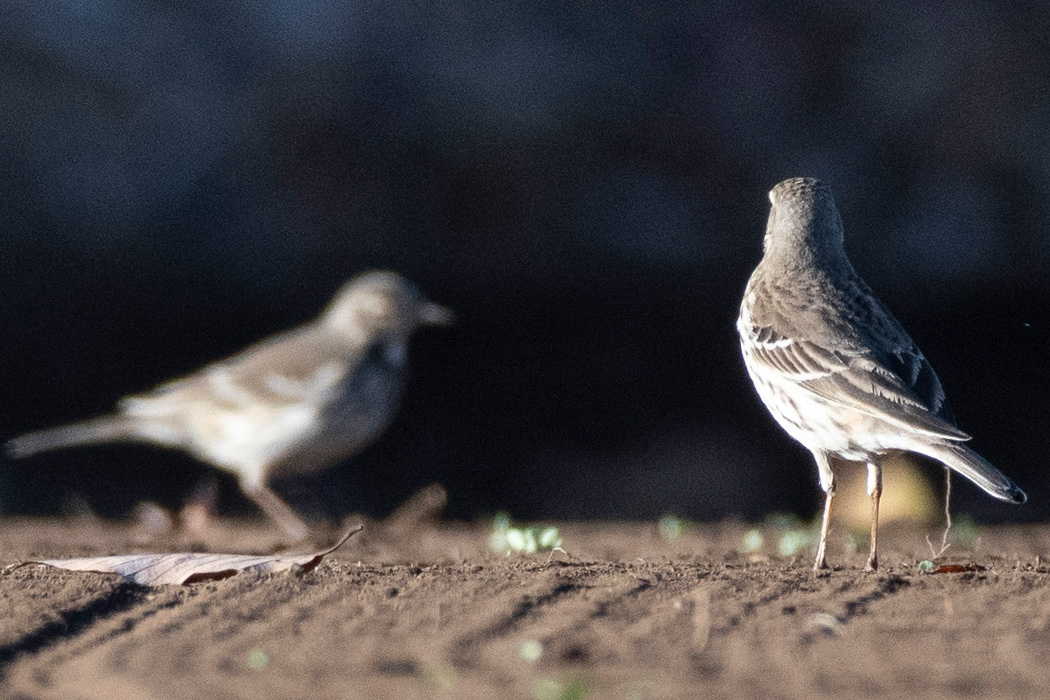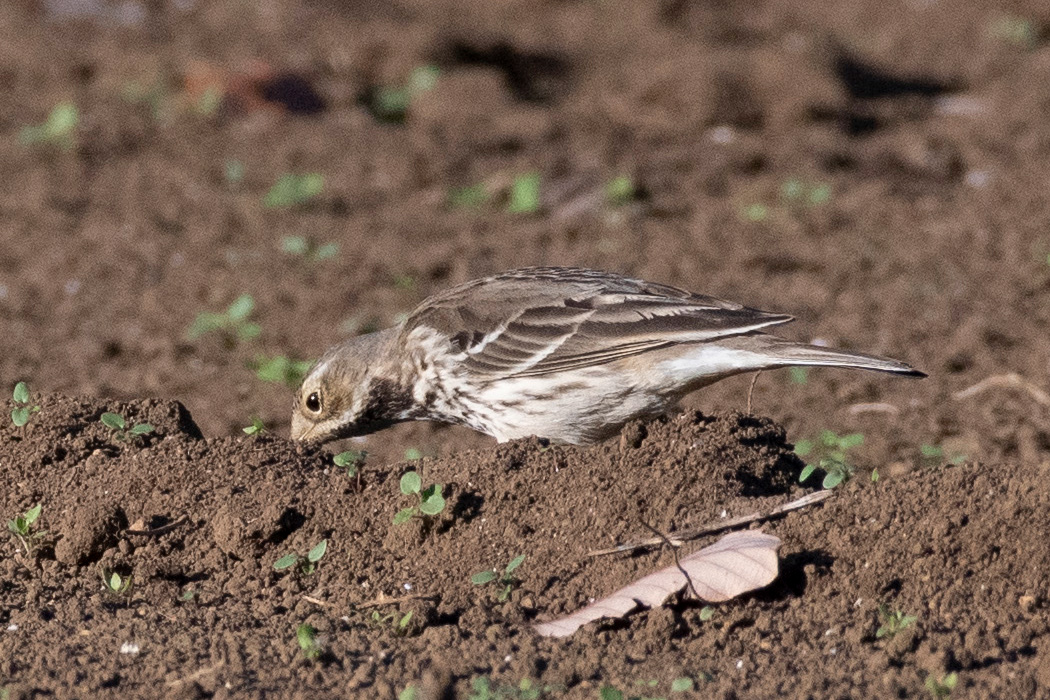
Buff-bellied Pipit
Earth-colored wagtail companion
| Scientific name | Anthus spinoletta |
| English name | Buff-bellied Pipit |
| Japanese name | 田雲雀 |
| Classification | Aves |
| Classification details | Passeriformes Motacillidae |
| Full length | 16cm |
| Distribution | Flies south of Honshu as a winter bird |
Characteristics
A bird of the wagtail family with a soil-like brown back. The belly is white, but there are irregular brown stripes around the throat. The head is also brown, but the area around the eyes and eyebrows is a bright buff color. The legs are pale red. When walking, it raises and lowers its tail feathers like a bird of the wagtail family.
Because of their appearance, color, and how they fly off together when they sense danger, they are associated with the wagtail.
Calls
When it is cautious and takes off, it calls "beep-beep-beep" continuously. When walking on the ground, it emits a short "ch" sound.
How to distinguish Tahibari and Bingzui
It is difficult to distinguish between tahibari and oilseed tuna due to their similar pattern and leg color. It's easy to tell them apart if you consider not only their appearance but also the place and time they were seen.
As for the difference in appearance, the spots near the face are clues. Tahibari has no pale spots other than the eyebrow line, while oilseed tuna has a whitish spot behind the eye. It's a small difference, but it's a point when you can distinguish it by appearance.
In fact, information such as habitat and time is useful when distinguishing. The winter bird, Tahibari, can be seen in open ground such as rice fields from October onwards, while the oilseed basil can be seen in forests throughout the year. It is not possible to categorically say that Tahibari is on the ground and oilseed vines are on trees, but these living environments are also helpful.
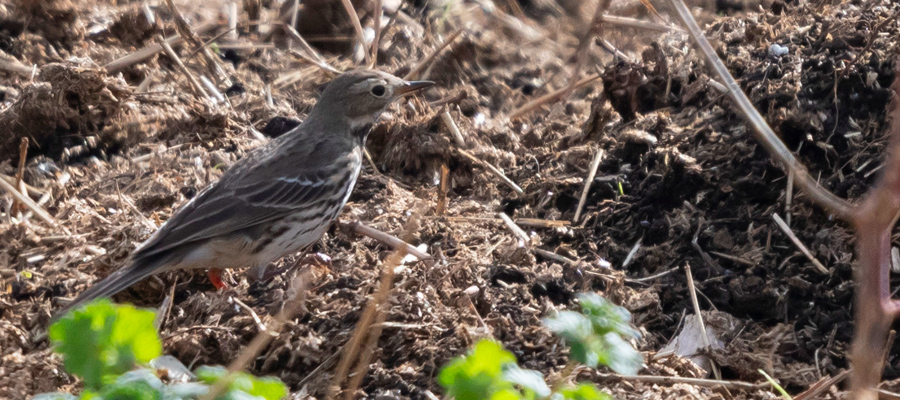
Ecology
They fly to open areas such as farmlands such as rice fields and riverbeds. They form groups and forage for insects and seeds on the ground like other wagtails such as the Japanese wagtail. They have the impression that they are more cautious than the Japanese wagtail, and when predators such as kestrels or humans approach them, they fly away in groups.
Habitat
Hachioji City Katakura Castle Ruins Park
I took a picture of them eating food in the field next to Katakura Castle Ruins Park in Hachioji City. In the lot next to the other wagtails, about six were walking on the ground. They are very cautious, and when they get close to a certain distance, they fly off all at once, go around the area, and land a little further away. It blended well with the ground and was somewhat difficult to photograph.
Fields in Hachioji City
A flock of about 10 birds came to the field where nothing was planted. Even if it flew away and ran away, it seemed to be suitable for foraging and returned after a while. There seemed to be some individuals who were highly cautious and others who were not so cautious in the herd.
Video
The video of Tahibari.
They came to the field in groups of about 10 and were foraging.
Pictures
Introducing a picture of Buff-bellied Pipit.

Picture book

Sawtooth stag
A stag beetle with a curved jaw.......ead more.
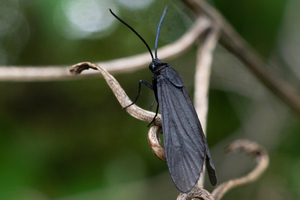
--
Its entire body is black, with slightly blue antennae.......ead more.
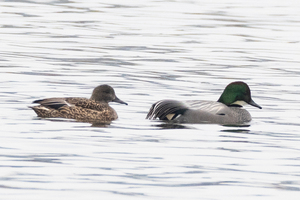
Falcated duck
The male looks like he's wearing a Napoleon hat.......ead more.

Duniln
They come to the tidal flats in large numbers.......ead more.

---
A jumping spider that can be seen in parks and houses.......ead more.

